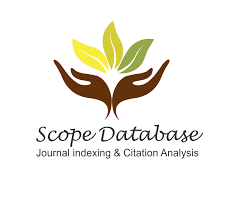Details
Classification of Pottery Shards from Diverse Geographical Regions Based on XRF Profiles
Ankita Nandy
Department of Computing, Asia Pacific University, Kuala Lumpur, Malaysia
Download PDF http://doi.org/10.37648/ijrst.v13i03.005
http://doi.org/10.37648/ijrst.v13i03.005
Abstract
Pottery fragments found in archaeological sites across the world provide insights into the prevalent manufacturing technology, commercial usage of wares and the socio-politico-economic fabric of the societies which crafted them. Their chemical profile can be used to characterise the clay used in their making, and thus, locate their origins. The technologies for the generation of such geochemical profiles have been around for decades, and several researchers have published the results for their samples. However, such data has undergone just basic statistical analysis. This work collates such data from multiple sources and performs a comparative analysis of multiple machine learning classifiers, to showcase the potential utility of bringing up such datasets for further exploration. It can speed up the segregation and mapping of historical artefacts and add value to archaeological teams working in developing countries of Asia and Africa. AAA replica watches 2023 rolex replica watches UK can be found from the online store. All the collections are available. Swiss official replique montre france for sale are cheap for men and women.
Keywords: pottery shards; XRF; machine learning; classification; provenance
References
- Pillay, A. E., Punyadeera, C., Jacobson, L., & Eriksen, J. (2000). Analysis of ancient pottery and ceramic objects using xâ€ray fluorescence spectrometry. Xâ€Ray Spectrometry: An International Journal, 29(1), 53-62.
- Reddy, A., Attaelmanan, A. G., & Mouton, M. (2012, July). Pots, plates and provenance: sourcing Indian coarse wares from Mleiha using X-ray fluorescence (XRF) spectrometry analysis. In IOP Conference Series: Materials Science and Engineering (Vol. 37, No. 1, p. 012010). IOP Publishing.
- Wu, Q. Q., Zhu, J. J., Liu, M. T., Zhou, Z., An, Z., Huang, W., ... & Zhao, D. Y. (2013). PIXE-RBS analysis on potteries unearthed from Lijiaba Site. Nuclear Instruments and Methods in Physics Research Section B: Beam Interactions with Materials and Atoms, 296, 1-6.
- Chandrasekaran, A., Naseerutheen, A., & Ravisankar, R. (2017). Dataset on elemental concentration and group identification of ancient potteries from Tamil Nadu, India. Data in brief, 10, 215-220.
- Sarhaddi-Dadian, H., Moradi, H., Zuliskandar, R., & Purzarghan, V. (2017). X-ray fluorescence analysis of the pottery shards from Dahan-e Ghulaman, the Achaemenid site in Sistan, east of Iran. Interdisciplinaria Archaeologica, 8(1), 35-41.
- Oliveira, L. S. S., Abreu, C. M., Ferreira, F. C. L., Lopes, R. C. A., Almeida, F. O., Tamanaha, E. K., ... & Souza, D. N. (2020). Archeometric study of pottery shards from Conjunto Vilas and São João, Amazon. Radiation Physics and Chemistry, 167, 108303.
- Daszkiewicz, M., Gavrylyuk, N., Hellström, K., Kaiser, E., Kashuba, M., Kulkova, M., ... & Winger, K. (2020). Possibilities and limitations of pXRF as a tool for analysing ancient pottery: a case study of Late Bronze and Early Iron Age pottery (1100–600 BC) from the northern Black Sea region. Praehistorische Zeitschrift, 95(1), 238-266.
- Anglisano, A., Casas, L., Queralt, I., & Di Febo, R. (2022). Supervised Machine Learning Algorithms to Predict Provenance of Archaeological Pottery Fragments. Sustainability, 14(18), 11214.
- Iyer, A., & Franklin, M. (2022). AI-Powered Archaeology: Determining the Origin Culture of Various Ancient Artifacts Using Machine Learning. Journal of Student Research, 11(1).
- Pawlowicz, L. M., & Downum, C. E. (2021). Applications of deep learning to decorated ceramic typology and classification: A case study using Tusayan White Ware from Northeast Arizona. Journal of Archaeological Science, 130, 105375.
- Bickler, S. H. (2021). Machine learning arrives in archaeology. Advances in Archaeological Practice, 9(2), 186-191.











